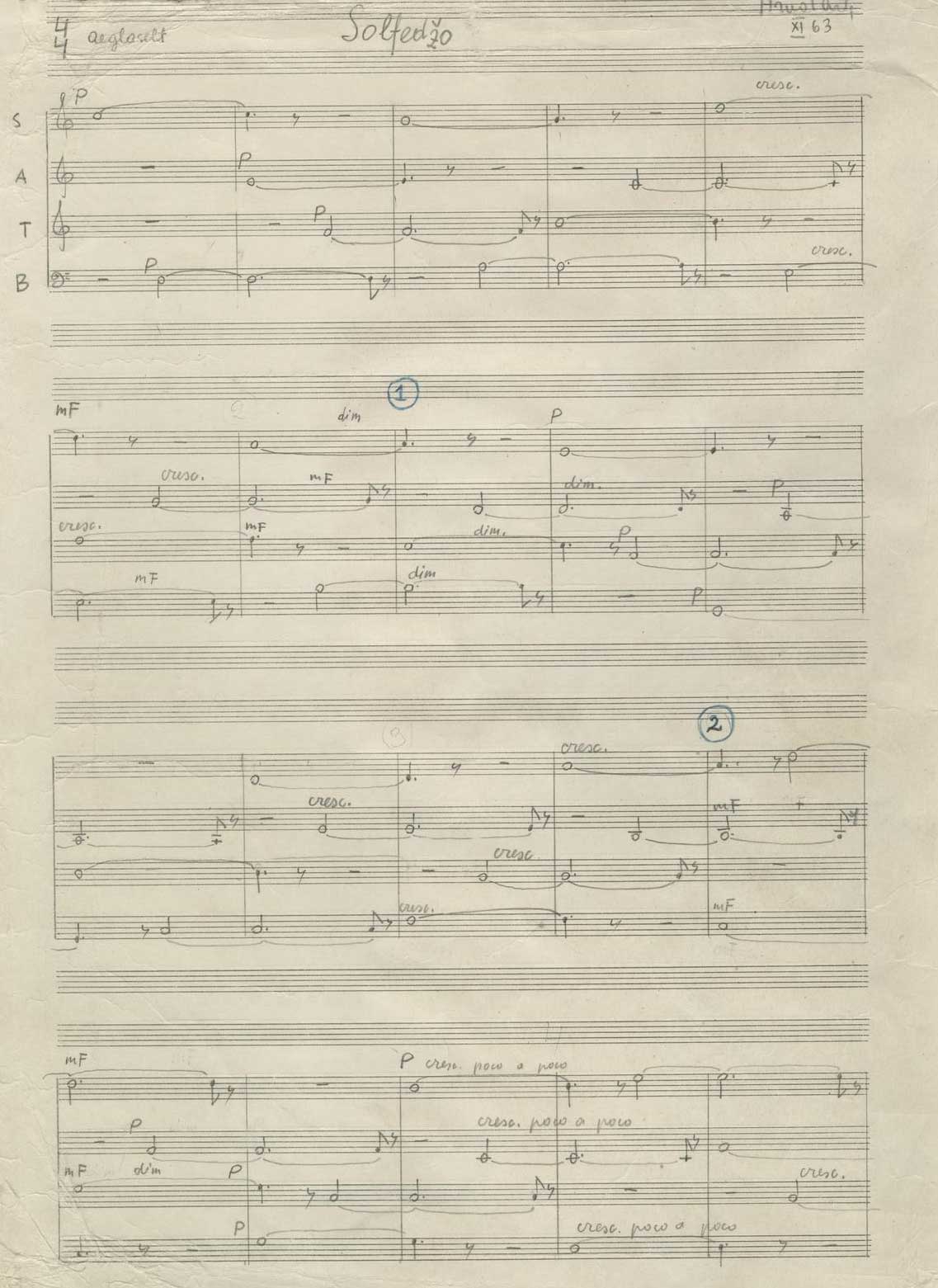Arvo Pärt’s Solfeggio (1963) is his first a cappella choir piece. Exremely laconic musical structure is based on a simple scale of C major. Voice groups of mixed choir enter in different octaves successively with notes from the tone row, forming vertical sound clusters. The text consists only of syllable names of the notes: do, re, mi, fa, sol, la, si.
The conductor and Pärt scholar Paul Hillier has pointed out that occasionally some triads occur among the clusters, “as if the composer got caught up in a secret garden, but is not yet ready to understand its beauty, which is perfect unto itself.”
This poetic miniature for choir holds a special place among Pärt’s early works as well as in his whole ouvre. On one hand, it suits well with the avant-gard…
Arvo Pärt’s Solfeggio (1963) is his first a cappella choir piece. Exremely laconic musical structure is based on a simple scale of C major. Voice groups of mixed choir enter in different octaves successively with notes from the tone row, forming vertical sound clusters. The text consists only of syllable names of the notes: do, re, mi, fa, sol, la, si.
The conductor and Pärt scholar Paul Hillier has pointed out that occasionally some triads occur among the clusters, “as if the composer got caught up in a secret garden, but is not yet ready to understand its beauty, which is perfect unto itself.”
This poetic miniature for choir holds a special place among Pärt’s early works as well as in his whole ouvre. On one hand, it suits well with the avant-garde spirit of Pärt’s works in the 1960s reflecting the impact of so-called sonoristic music which was especially popular amongst Polish composers. It was namely in September 1963 when Pärt visited the famous Warsaw Autumn festival of contemporary music in Poland for the first time. On the other hand, the aesthetic sound world and extremely reduced musical structure of Solfeggio bring it closer to the mostly diatonic tintinnabuli style. Musical logic that is based on strict rules or predetermined algorithms is characteristic to Pärt’s works from both of his creative periods.
Solfeggio is dedicated to the conductor Eri Klas and premiered by the Estonian Radio Choir, conducted by Eri Klas in 1964. Later, the composer arranged Solfeggio for string quartet (2008), saxophone quartet (2008) and eight or four cellos (2010).
